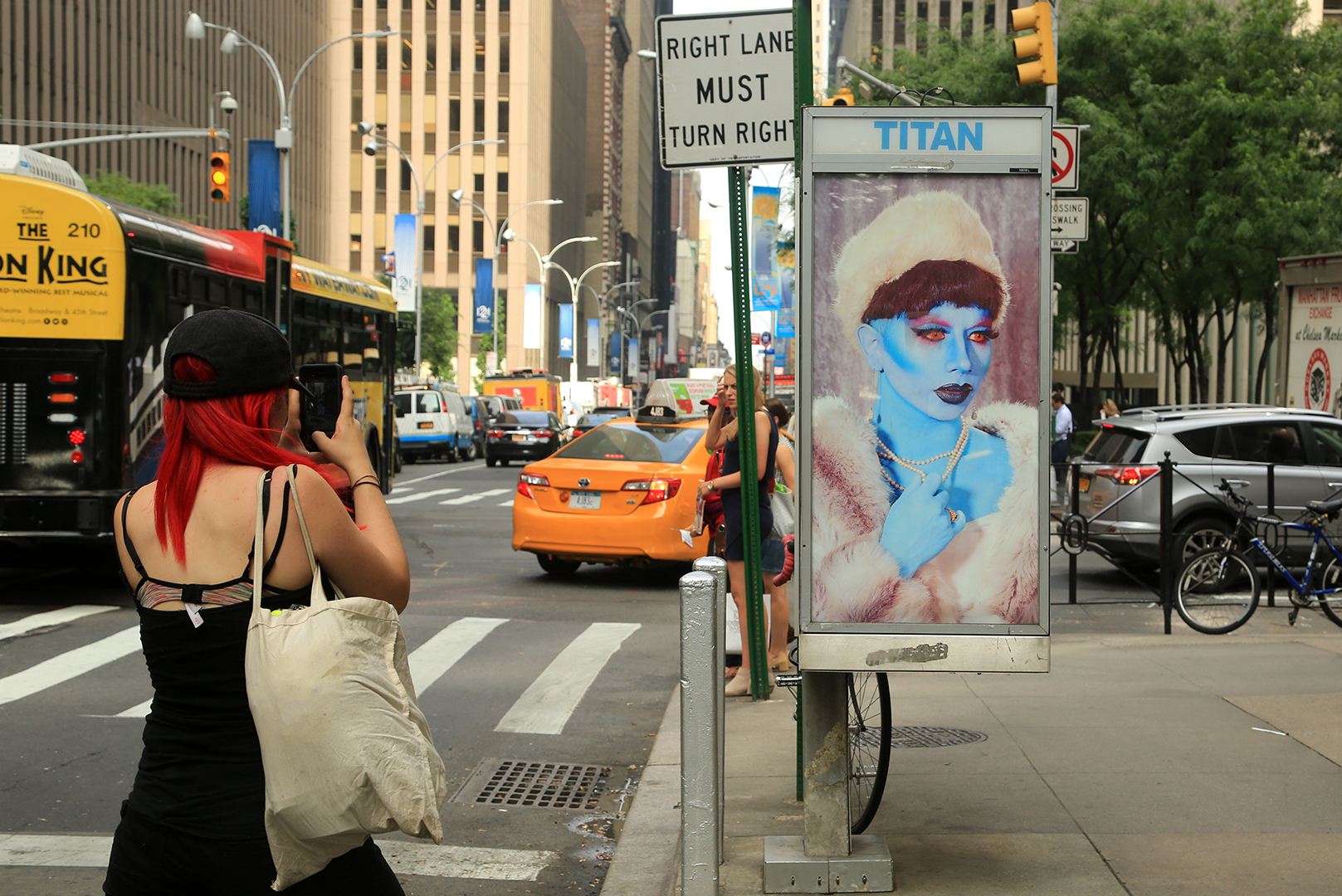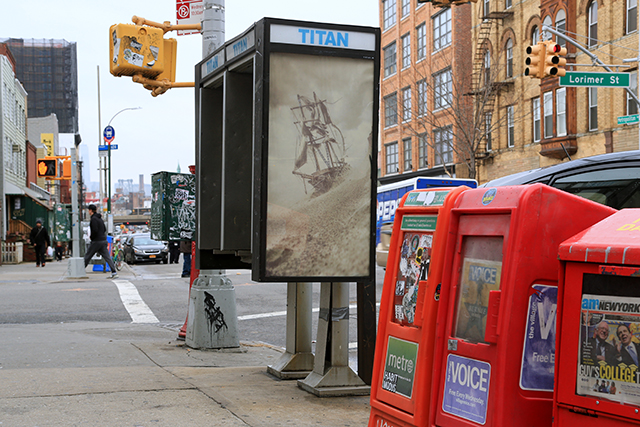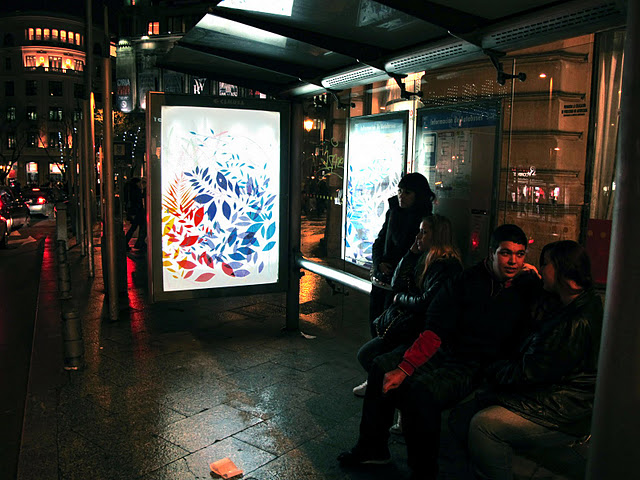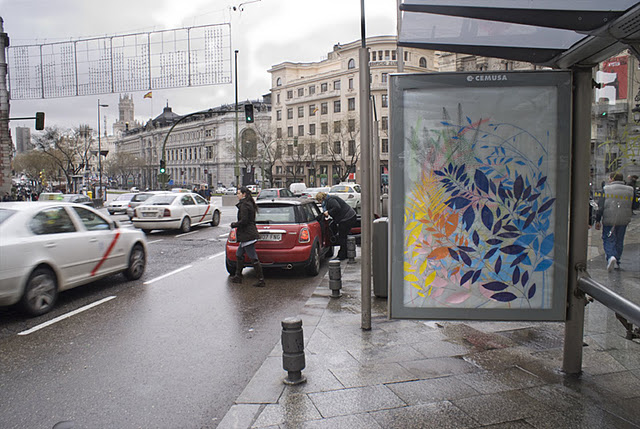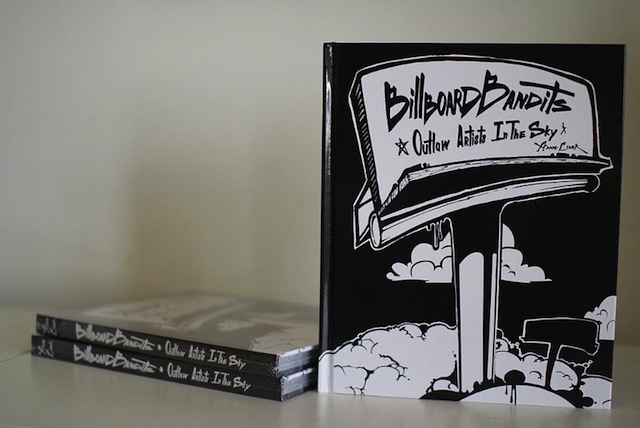
Adam Clark’s Billboard Bandits: Outlaw Artists in the Sky, published this year, is 208 pages of photos, entry level information on graffiti culture (i.e. What are throw-ups, pieces, and billboard backs?), profiles and personal anecdotes in the vernacular of true writers (which includes explicit language).
The book is divided into two sections by graffiti and street art, with “Billboard bombing” representing the graffiti camp of billboard interference, which seems to be a bit looser in definition given that many of the pieces were not on the ads directly, but above, below, on the walls behind, or on the backs of billboards. The street art portion, entitled “Billboard Liberation”, is a lot more limited in coverage but profiles some street art favorites like Ron English and Billboard Liberation Front. Clark’s distinction between the two subcultures is a necessary one for this topic since the motivation behind hitting billboards is entirely different: graffiti artists use billboards as a highly-visible platforms to proliferate their names, whereas street artists tend to utilize the space to express ideas. The common thread between both is the drive to deemphasize, interfere with, or eliminate the ubiquitous power of adverts.
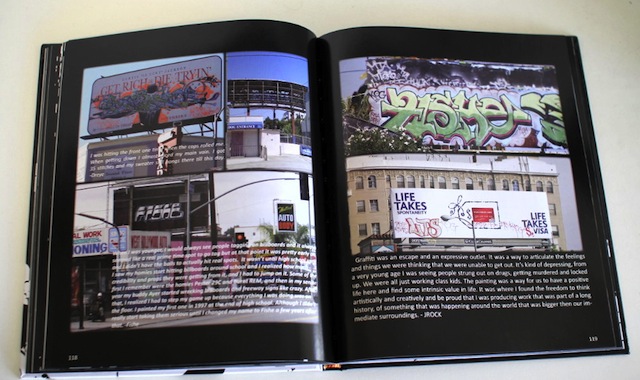
The content is fit for a niche audience of LA graffiti heads, with featured West Coast writers such as AM7 Crew, Augor MSK, Bleek CBS Mayhem, Fuct AL LGF, Jeloe US BKF CF, Naut One, Pharoe LCF SOB, Pysa MSK LTS, and Silencer. For those people who would truly appreciate seeing these artists, I think the content in this book would be better published in the form of a regularly-updated blog. Works on a billboard are typically short lived, so the book can show recent and past works by artists but can’t update readers on how long the pieces lasted which is one of the interesting part of ad disruptions.
You can get a copy of Billboard Bandits here.
Photos courtesy of Art Crimes: Graffiti News and Events
